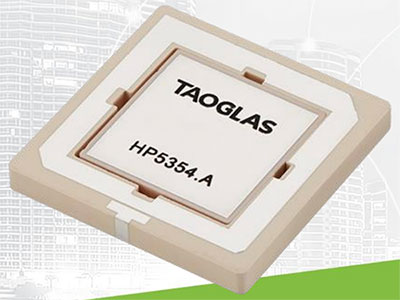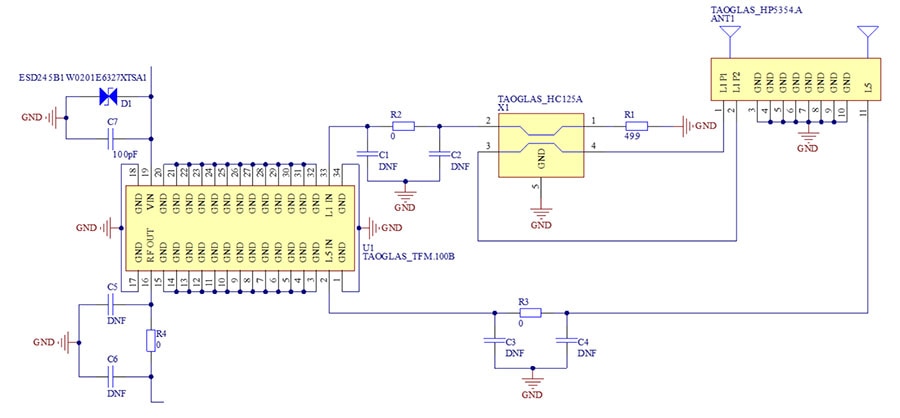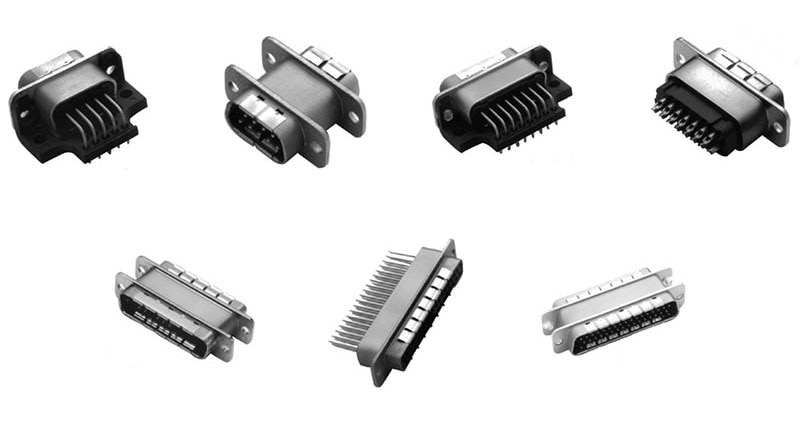天線的創新材料和設計能克服多頻段 GNSS 的困境
全球定位系統 (GPS) 自 1970 年代末期至 1980 年代間,在美國國防部 (DoD) 的支持下,其作用和應用皆大幅成長。最初僅用於導航和飛彈導引,現在則整合到資產追蹤和監測、自動駕駛車、農業、穿戴式裝置,還有其創始人從未設想過的其他眾多最終用途。
在美國成功部署 GPS 後,其他國家和區域也開發並推出等同 GPS 的系統,統稱為全球導航衛星系統 (GNSS)。GNSS 包括 GLONASS (俄羅斯)、Galileo (歐盟) 和 BeiDou (中國),以及兩個區域型的 GNSS 系統:QZSS (日本) 和 IRNSS/NavIC (印度)。
雖然最初的 GPS 接收器系統很龐大,幾乎放不進後車廂,但現代技術已將 GNSS 核心引擎縮小到單一積體電路 (IC)。無論 GNSS 類型如何,這些系統全都需要經過最佳化的天線,以接收來自 GNSS 衛星陣列的極低位準 RF 訊號。隨著 GNSS 接收器的尺寸縮小且功率要求降低,天線的尺寸也要跟著縮小。
但這會對接收器帶來挑戰,因為就必須處理不只一個 GNSS 系統或頻段。在此情況下,需要的天線必須針對使用中的不同系統,處理其較低和較高的 RF 頻段 (圖 1)。
 圖 1:針對使用中的各個系統,其指定的 GNSS 頻率分配和頻段皆呈現出重疊和分離。(圖片來源:Taoglas Limited)
圖 1:針對使用中的各個系統,其指定的 GNSS 頻率分配和頻段皆呈現出重疊和分離。(圖片來源:Taoglas Limited)
GNSS 頻段與頻率具有以下名稱:
- 1,559 至 1,610 MHz,稱為 L1、E1、B1
- 1,215 至 1,300 MHz,稱為 L2、E6、B3、L6
- 1,164 至 1,215 MHz,稱為 L5、E5、B2、L3
請注意,L 頻段是指 1,525 至 1,559 MHz 的頻率範圍,且各衛星都會使用此頻段來傳輸校正訊號。
寬頻或多頻段天線的需求,可追溯至 20 世紀初的無線通訊早期階段,且有兩種通用的作法可達成。一種是使用實體「陷波器」或負載線圈,讓單一窄頻天線在兩個不同的中心頻率下共振。另一個作法是採用專為達到寬頻效能而設計的單一天線。
對當今的緊湊型系統設計來說,這兩種解決方案都並非 GNSS 天線的首選。陷波器作法需要相對較大的離散電感和電容,而寬頻天線則會犧牲對效能至關重要的屬性,例如增益和效率。
優異的天線作法
現在已經有個更好的解決方案,就是 Taoglas Limited 的 Inception 系列。以 HP5354.A (圖 2) 為例,就是一款多頻段、1,160 至 1,610 MHz 的被動式 GNSS 塊狀天線,專為增強定位準確度而設計。這款創新的陶瓷塊狀內塊狀天線,具有針對 BeiDou (B1/B2a)、GPS/QZSS (L1/L5)、GLONASS (G1) 和 Galileo (E1/E5a) 頻段的最佳化增益。
 圖 2:HP5354.A 是一款緊湊的薄型天線,經過最佳化,可發揮雙頻段 (L1 和 L5) GNSS 效能。(圖片來源:Taoglas Limited)
圖 2:HP5354.A 是一款緊湊的薄型天線,經過最佳化,可發揮雙頻段 (L1 和 L5) GNSS 效能。(圖片來源:Taoglas Limited)
HP5354.A 的尺寸為 35 × 35 mm,高度為 4 mm,因此非常適合緊湊的薄型設計。採用 11 引腳的封裝,其中 3 個引腳用於接收訊號介面 (2 個用於 L1 頻段,1 個用於 L5 頻段),而其餘引腳則當作接地。
多重饋入型 HP5354.A 已使用 70 × 70 mm 接地面進行調諧和測試,具有優異的輻射模式。可以涵蓋新一代 L1/L5 GNSS 所需的頻段,並可在兩個頻段上,針對關鍵頻率的相關參數發揮完整特色,包括回波損耗、電壓駐波比 (VSWR)、效率、平均增益、峰值增益、軸比、相位中心偏移、相位中心變化和群體延遲。
Taoglas HP5354.A 的應用
雖然 HP5354.A 能搭配使用者提供的前端模組使用,但 Taoglas 可利用 TFM.100B GNSS RF 模組簡化低位準訊號鏈的開發。此高效能模組可涵蓋 L1 和 L5 頻段,專為搭配多重饋入塊狀天線使用而設計。
TFM.100B 具有雙級低雜訊放大器 (LNA),可在所有頻段提供超過 25 dB 的增益,並達到小於 3 dB 的低雜訊指數。此模組在低頻段和高頻段的訊號路徑中均採用表面聲波 (SAW)/LNA/SAW/LNA 拓撲結構,以免不必要的頻外 (OOB) 干擾過度驅動 GNSS LNA 或接收器。
TFM.100B 中的 SAW 濾波器經過精心挑選和放置,可提供優異的 OOB 拒斥效果,同時維持 3 dB 的低雜訊指數。這款容易整合的表面黏著裝置尺寸為 20 × 18 mm,能以 1.8 至 5.5 VDC 單電源操作。
Taoglas 提供 AHPD5354A 評估板 (圖 3),可進一步簡化 HP5354.A 整合到完整系統的作業。此板件具有 TFM.100B RF 前置放大器,以及 Taoglas HC125A。這款薄型、高效能的 3 dB 混合式耦合器,專為多重饋入多頻段 GNSS 應用而設計。HP5354.A、TFM.100B 和 HC125A 能以整合式訊號鏈的方式一同運作。
 圖 3:AHPD5354A 評估板具有 L1/L5 訊號用的混合式耦合器,以及全功能的 RF 前置放大器和濾波器,可提供完整的 RF 訊號鏈。(圖片來源:Taoglas Limited)
圖 3:AHPD5354A 評估板具有 L1/L5 訊號用的混合式耦合器,以及全功能的 RF 前置放大器和濾波器,可提供完整的 RF 訊號鏈。(圖片來源:Taoglas Limited)
HP5354.A 透過三個引腳提供兩條正交饋線,其中兩個引腳用於 L1 頻段天線輸出,另一個引腳則用於 L5 頻段輸出。這些饋線會結合到 L1 頻段用的混合式耦合器中,以確保最佳的軸比並產生右旋圓極化 (RHCP) 訊號,接著再呈現給 TFM.100B 上的對應輸入端。
請注意,HC125A 混合式耦合器僅需用於此天線的 GNSS 高工作頻段 (1,559 至 1,610 MHz)。評估板的佈局圖可指出如何將混合式耦合器放置在天線引腳附近,以及如何使用兩個並聯的 100 Ω 電阻正確端接。
結論
無處不在的 GNSS 利用複雜的核心 IC 和進階演算法來進行必要的運算,以判定接收器的位置。要向這些 IC 提供原始訊號是 RF 訊號鏈必經的挑戰,接收器天線就是起點。Taoglas 的 HP5354.A 是一款微型的雙頻表面黏著式天線,可同時支援較低和較高的 GNSS 頻段。若搭配 Taoglas 混合式耦合器和低雜訊前置放大器裝置一同使用,設計人員就享有直覺的解決方案,可實作 GNSS 接收器的 RF 前端。
相關內容
- Inception 系列 GNSS L1/L5 塊狀內塊狀天線
- 為何高可靠度天線是資料中心 AI 應用的關鍵
- 將鞭型天線切割成需求尺寸
- 使用陷波器搭配偶極天線,達到多頻段作業
- 天線極化:這是什麼且重要性何在
- 簡化前端的 GNSS 產品開發
- Taoglas, 瞭解 GNSS 的 L1、L2 和 L5 頻段選項
- 如何挑選雙頻或多頻 GNSS 天線
https://www.digikey.com/en/product-highlight/t/taoglas/inception-series-patch-in-a-patch-antenna
https://www.digikey.com/en/blog/why-high-reliability-antennas-are-key
https://www.digikey.com/en/blog/cutting-that-whip-antenna-down-to-size
https://www.digikey.com/en/blog/use-traps-to-enable-multiband-operation-with-dipole-antennas
https://www.digikey.com/en/blog/antenna-polarization-what-it-is-and-why-it-matters
https://www.digikey.com/en/blog/simplifying-gnss-product-development-on-the-front-end
https://www.taoglas.com/blogs/navigating-l1-l2-and-l5-band-options-for-gnss/
https://www.taoglas.com/blogs/how-to-choose-between-a-dual-band-or-multi-band-gnss-antenna/

Have questions or comments? Continue the conversation on TechForum, Digi-Key's online community and technical resource.
Visit TechForum









